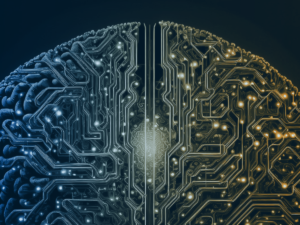Cloud vs. Local: The GenAI Architecture Dilemma

As companies rush to integrate Generative AI (GenAI) into their operations, they face a crucial decision: should they deploy their models in the cloud or keep them local? This choice isn’t just a technical detail – it can significantly impact performance, security, and costs. Let’s examine the trade-offs in depth.
Performance: Speed vs. Scale
Cloud’s Scalability Advantage
Cloud-based GenAI architectures shine when it comes to scalability. They can tap into vast computational resources from providers like Google Cloud, AWS, and Microsoft Azure. This is particularly beneficial for large language models (LLMs) that demand significant computational power. Cloud solutions can dynamically allocate resources based on demand, ensuring consistent performance even under high loads [1].
The scalability of cloud solutions is especially crucial for businesses with fluctuating workloads. During peak times, cloud architectures can automatically provision additional resources to handle increased demand. This elasticity is a key advantage for applications that experience sudden spikes in usage, such as customer service chatbots during holiday seasons or financial modeling tools during market volatility [2].
Local’s Latency Edge
But cloud isn’t always king. Local inference architectures, often deployed on edge devices, can offer lower latency. When you need real-time processing – think autonomous vehicles or real-time video analysis – local deployment can be the better choice. It eliminates the delay introduced by data transmission to and from cloud servers [4].
This latency advantage can be critical in time-sensitive applications. For instance, in autonomous driving systems, even milliseconds of delay in processing sensor data could have serious consequences. Similarly, in high-frequency trading algorithms, the speed advantage of local processing could translate into significant financial gains [15].
Throughput Considerations
When evaluating performance, it’s crucial to consider not just latency but also throughput – the number of requests a system can handle in a given time frame. Cloud-based solutions often have the edge here, as they can leverage distributed computing to process multiple requests in parallel [16].
However, advances in edge computing are narrowing this gap. Techniques like model compression and quantization are enabling more powerful inference capabilities on local devices, increasing their ability to handle multiple requests simultaneously [15].
The trade-off here is clear: do you prioritize the ability to handle massive, variable workloads, or the need for lightning-fast, consistent response times?
Resource Utilization: Flexibility vs. Control
Cloud’s Cutting-Edge Hardware
Cloud-based solutions benefit from the latest AI accelerators like NVIDIA GPUs and Google’s TPUs. These are optimized for high-performance AI tasks and can handle the memory-intensive requirements of large GenAI models [3].
Cloud providers are in a constant race to offer the most advanced hardware. For instance, NVIDIA’s H100 Tensor Core GPUs, often available through cloud services, are designed to deliver high performance with improved energy efficiency [1]. This means that by opting for cloud solutions, organizations can always have access to state-of-the-art hardware without the need for costly upgrades to their own infrastructure.
Local’s Optimization Potential
Local architectures, while more constrained, offer a different kind of flexibility. Through model compression and optimization techniques, organizations can deploy GenAI models on devices with limited resources. This approach opens up possibilities for edge computing and IoT applications [4].
Model compression techniques, such as pruning and quantization, can significantly reduce the size of GenAI models without substantial loss in accuracy. For example, quantization can reduce model size by up to 75% while maintaining similar performance levels. This makes it possible to run sophisticated AI models on smartphones, smart home devices, or industrial IoT sensors [15].
Memory and Energy Considerations
Memory utilization is a critical factor in GenAI deployments. Cloud providers offer scalable memory resources, allowing for efficient handling of large datasets. This is particularly important for models that require substantial amounts of memory to store parameters and process data [4].
On the other hand, local architectures need to be more creative with memory usage. Techniques like gradient checkpointing can help manage memory constraints by trading computation for memory. While this might increase processing time, it can make the difference between being able to run a model locally or not [15].
Energy efficiency is another growing concern, especially as AI models become more complex and energy-intensive. Cloud providers can optimize energy usage through efficient resource allocation and the use of energy-efficient hardware at scale. Local deployments, while potentially less efficient overall, offer more direct control over energy usage, which can be crucial in battery-powered or energy-constrained environments [3].
The question becomes: do you need the raw power and flexibility of cloud resources, or the fine-grained control and efficiency of optimized local deployment?
Security and Privacy: Convenience vs. Control
Cloud Security Challenges
Data privacy and security are paramount in GenAI deployments. Cloud-based architectures require robust encryption and privacy-preserving techniques to protect data in transit. Despite these measures, the involvement of third-party cloud providers introduces potential vulnerabilities [5].
Cloud providers invest heavily in security measures, including encryption protocols like TLS (Transport Layer Security) and AES (Advanced Encryption Standard) to secure data transfer and storage [7]. They also offer sophisticated Identity and Access Management (IAM) tools to control who has access to sensitive data and computational resources [9].
However, the shared nature of cloud environments introduces unique security challenges. The risk of data breaches is exacerbated by the involvement of third-party cloud service providers. Organizations must rely on these providers to implement robust security measures to protect sensitive data [6].
Local Control and Privacy
Local inference, especially when combined with federated learning, offers enhanced privacy by processing data on-device. This approach minimizes exposure to external threats and can be crucial for industries dealing with sensitive data, like healthcare or finance [5].
In local deployments, organizations have more direct control over their security measures. They can implement strict access controls, conduct regular audits, and monitor user activity to detect and respond to suspicious behavior [12]. This level of control can be particularly important for organizations subject to strict regulatory requirements.
Federated learning, a technique often used in local deployments, allows models to be trained across multiple decentralized edge devices or servers holding local data samples, without exchanging them. This approach dramatically reduces the risk of data exposure, as the raw data never leaves the local device [4].
Regulatory Compliance and Ethical Considerations
The deployment of GenAI models raises significant ethical concerns related to data privacy, bias, and responsible development. Organizations must navigate these concerns by implementing robust ethical frameworks and compliance measures.
In cloud-based deployments, compliance with data protection regulations such as GDPR (General Data Protection Regulation) and CCPA (California Consumer Privacy Act) is crucial. These regulations mandate strict controls over data collection, processing, and storage, ensuring that user privacy is protected [10].
Local deployments, while potentially easier to manage from a compliance perspective, still face challenges, particularly when handling sensitive data such as healthcare records or financial information. Organizations must ensure that their data handling practices align with industry-specific regulations and ethical standards [11].
Organizations must weigh the convenience and scalability of cloud solutions against the enhanced control and privacy of local deployments. The right choice depends on the sensitivity of the data being processed, the regulatory environment, and the organization’s risk tolerance.
Costs: Operational Flexibility vs. Predictability
Cloud’s Pay-as-You-Go Model
Cost considerations often drive architectural decisions. Cloud-based solutions typically offer lower upfront costs, as organizations can leverage existing cloud infrastructure. However, they may incur variable costs based on usage, which can lead to unexpected expenses, especially for high-volume applications [13].
The pay-as-you-go model of cloud services offers great flexibility, allowing organizations to scale their usage up or down based on demand. This can be particularly beneficial for startups or companies with fluctuating AI workloads. However, as usage grows, so do the costs. Organizations need to carefully monitor their cloud usage to avoid bill shock [13].
Local’s Upfront Investment
Local architectures require significant initial investment in hardware and maintenance. But they offer more predictable long-term costs, as organizations have control over their infrastructure and aren’t subject to the variable pricing of cloud services [2].
While the upfront costs can be substantial, local deployments can be more cost-effective in the long run for organizations with consistent, high-volume AI workloads. The predictability of costs can also be advantageous for budgeting and financial planning [13].
Hidden Costs and Considerations
When evaluating costs, it’s important to consider factors beyond just infrastructure expenses. Model customization and fine-tuning, for example, can incur significant costs regardless of the deployment architecture. Fine-tuning a model like GPT-3.5 Turbo on a dataset with 100,000 tokens over three epochs costs about $2.40 [14].
Talent acquisition and development is another often-overlooked cost factor. The deployment of GenAI applications necessitates a skilled workforce, leading to significant talent acquisition and development costs. Organizations need to develop medium and long-term talent plans, balancing external hiring with internal training and promotion [14].
The choice here depends on your financial strategy: do you prefer the flexibility of pay-as-you-go cloud services, or the predictability of owned infrastructure?
Deployment Strategies: The Hybrid Approach
Hybrid and Multi-Cloud Strategies
As with many technology decisions, the answer doesn’t have to be binary. Hybrid cloud and multi-cloud strategies are gaining traction, offering a flexible approach to GenAI deployment. These strategies allow organizations to optimize resource utilization, enhance data privacy, and improve performance by distributing workloads across different environments [14].
For instance, an organization might keep sensitive data processing on-premises while leveraging cloud resources for less sensitive, more computationally intensive tasks. Or they might use edge computing for real-time processing while relying on the cloud for more complex, less time-sensitive operations.
Edge Computing and Federated Learning
Edge computing is emerging as a powerful deployment strategy for GenAI applications. By processing data closer to its source, edge computing can significantly reduce latency and bandwidth usage. This approach is particularly beneficial for applications that require real-time processing, such as video surveillance and IoT devices [2].
Federated learning, often used in conjunction with edge computing, allows models to be trained across multiple decentralized edge devices or servers holding local data samples, without exchanging them. This approach not only enhances data privacy but also enables organizations to leverage distributed data sources for model training and improvement [4].
Model Compression and Optimization
Model compression and optimization techniques play a crucial role in enabling efficient GenAI deployments, especially in resource-constrained environments. Techniques such as pruning, quantization, and knowledge distillation can significantly reduce model size and computational requirements without substantial loss in accuracy [15].
These techniques are particularly important for edge and IoT deployments, where computational resources and energy efficiency are critical constraints. By compressing models, organizations can deploy sophisticated AI capabilities on a wide range of devices, from smartphones to industrial sensors [15].
Real-World Applications and Industry-Specific Considerations
Healthcare
In the healthcare industry, GenAI applications such as medical image analysis and personalized treatment recommendation systems require both high accuracy and strict data privacy. A hybrid approach might be ideal here, with sensitive patient data processed locally while leveraging cloud resources for model training on anonymized datasets [14].
Automotive
The automotive industry is increasingly relying on AI for functions ranging from autonomous driving to predictive maintenance. Edge computing plays a crucial role here, enabling real-time processing of sensor data for immediate decision-making. However, cloud resources might be used for more complex tasks like fleet management and long-term data analysis [15].
Finance
In the financial sector, GenAI is used for everything from fraud detection to algorithmic trading. The need for real-time processing in trading applications might favor local deployments, while the massive data processing required for risk analysis and compliance reporting might be better suited to cloud architectures [13].
Entertainment and Media
The entertainment industry is leveraging GenAI for content creation, recommendation systems, and user experience personalization. Cloud-based solutions are often preferred here due to the need for scalability to handle millions of users and vast content libraries. However, edge computing might be employed for real-time content delivery optimization [14].
Conclusion
The choice between cloud-based and local GenAI architectures isn’t just a technical decision – it’s a strategic one that can significantly impact an organization’s performance, security, and bottom line. As you navigate this decision, consider your specific use cases, data sensitivity, performance requirements, and long-term cost projections.
Remember, the goal isn’t to choose the “best” architecture in absolute terms, but to find the approach that best aligns with your organization’s unique needs and constraints. And don’t be afraid to mix and match – a thoughtful hybrid approach might just give you the best of both worlds.
As the field of GenAI continues to evolve rapidly, so too will the strategies for its deployment. Stay informed about emerging technologies and best practices, and be prepared to adapt your approach as new possibilities emerge. The most successful organizations will be those that can leverage the strengths of both cloud and local architectures while mitigating their respective weaknesses.
References
[1] NVIDIA Developer – https://developer.nvidia.com/blog/measuring-generative-ai-model-performance-using-nvidia-genai-perf-and-an-openai-compatible-api/
[2] LinkedIn – https://www.linkedin.com/pulse/genai-edge-when-solutions-make-sense-clearobject-t23bc/
[3] Medium – https://medium.com/@talukder9712/comparing-generative-ai-cloud-platforms-aws-azure-and-google-4a035334f8bf
[4] Nature – https://www.nature.com/articles/s44287-024-00053-6
[5] Intel Community – https://community.intel.com/t5/Blogs/Tech-Innovation/Artificial-Intelligence-AI/The-Growing-Role-of-Small-Nimble-GenAI-Models/post/1573934
[6] Cloud Security Alliance – https://cloudsecurityalliance.org/blog/2023/10/16/demystifying-secure-architecture-review-of-generative-ai-based-products-and-services
[7] AWS Security Blog – https://aws.amazon.com/blogs/security/securing-generative-ai-data-compliance-and-privacy-considerations/
[8] Palo Alto Networks – https://live.paloaltonetworks.com/t5/community-blogs/genai-security-technical-blog-series-1-6-secure-ai-by-design-a/ba-p/589504
[9] Thomson Reuters – https://www.thomsonreuters.com/en-us/posts/technology/elevating-trust-gen-ai/
[10] Seclore – https://www.seclore.com/blog/generative-ai-and-data-security-navigating-a-complex-landscape/
[12] Springer – https://link.springer.com/article/10.1007/s11276-024-03658-9
[13] Cloud Curated – https://cloudcurated.com/cloud-applications/cloud-vs-on-premises-weighing-genai-infrastructure-costs/
[14] Straive – https://www.straive.com/blogs/what-ceos-should-understand-about-the-costs-of-adopting-genai/
[15] SemiEngineering – https://semiengineering.com/how-to-successfully-deploy-genai-on-edge-devices/



